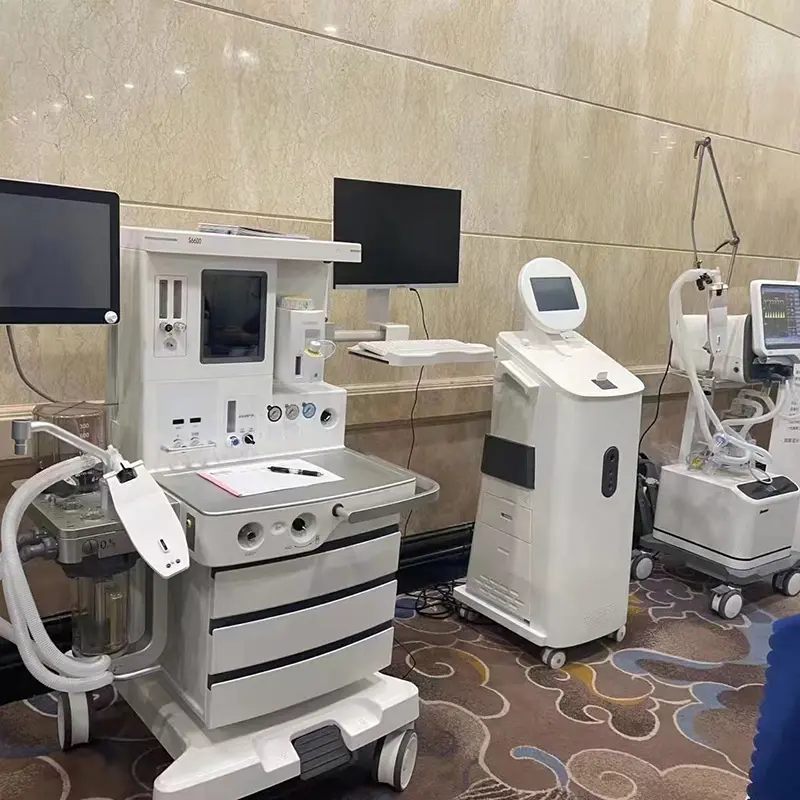Introduction:
Safeguarding Patient Health during Critical Medical Procedures
Internal cycle disinfection of the anesthesia machine plays a critical role in maintaining a sterile environment and ensuring optimal patient safety during medical procedures. With its advanced technology and meticulous disinfection capabilities, this process effectively eliminates potential sources of contamination within the internal components of the anesthesia machine. By safeguarding against healthcare-associated infections, internal cycle disinfection plays a pivotal role in promoting positive patient outcomes and reducing the risk of complications.
Comprehensive Disinfection Process:
Internal cycle disinfection of the anesthesia machine involves a comprehensive and methodical process to achieve thorough sterilization. Special disinfectants or cleaning agents, specifically formulated to target a wide range of microorganisms, are utilized to eliminate any potential contaminants. These agents are meticulously introduced into the anesthesia machine's internal components through a controlled cycle, ensuring complete coverage and disinfection.
Advanced Disinfection Technology:
The internal cycle disinfection of the anesthesia machine capitalizes on advanced disinfection technologies to achieve remarkable sterilization results. The process typically includes high-temperature options, pressurized steam, and integrated filtration systems, all of which work together to effectively eliminate harmful bacteria, viruses, and fungi. This multi-faceted approach ensures a high level of sterilization, reducing the risk of patient exposure to pathogens.
Stringent Compliance with Standards:
Internal cycle disinfection of the anesthesia machine adheres strictly to established guidelines and standards set by regulatory authorities and professional organizations. These guidelines ensure consistency, efficacy, and patient safety. Healthcare professionals meticulously follow these guidelines to maintain a sterile environment, emphasizing the importance of regular and routine disinfection cycles for anesthesia machines to prevent the cross-contamination of patients and reduce the risk of infections.
Optimized Sterility and Safety:
The main objective of internal cycle disinfection is to optimize the sterility and safety of the anesthesia machine. By effectively removing potential sources of contamination from the internal components, the risk of healthcare-associated infections is significantly reduced. This rigorous disinfection process creates a safer environment for patients during anesthesia administration, minimizing the chances of complications and ensuring positive patient outcomes.
Qualified Healthcare Professionals:
Internal cycle disinfection of the anesthesia machine is carried out by qualified healthcare professionals who possess the necessary expertise and training to execute the process meticulously. These professionals possess an in-depth understanding of the specific disinfection protocols and techniques required to maintain a sterile internal cycle. Their expertise ensures that the disinfection process is performed accurately and efficiently, adhering to the highest standards of sterility and safety.
Regular Maintenance and Monitoring:
Apart from routine internal cycle disinfection, anesthesia machines require regular maintenance and monitoring. Ongoing inspections and checks are conducted to identify and address any potential issues or areas that may require attention. Healthcare professionals meticulously assess and ensure the proper functioning of the anesthesia machine's internal components, minimizing the risk of contamination or malfunction during critical medical procedures.
Enhancing Patient Safety and Outcomes:
Internal cycle disinfection of the anesthesia machine plays a crucial role in enhancing patient safety and positive outcomes during medical procedures. By effectively eliminating potential sources of contamination, the risk of healthcare-associated infections and complications is mitigated. Maintaining a sterile environment during anesthesia administration is critical to prevent transmission and ensure patient well-being.
Conclusion:
Internal cycle disinfection of the anesthesia machine is a vital process that upholds the highest standards of sterility and patient safety during critical medical procedures. With its comprehensive disinfection methods, adherence to established standards, and the expertise of qualified healthcare professionals, the internal components of the anesthesia machine undergo rigorous disinfection, minimizing the risk of healthcare-associated infections and complications. Routine internal cycle disinfection, along with regular maintenance and monitoring, helps to optimize the functioning of the machine and provides healthcare professionals and patients with confidence and reassurance. Embrace internal cycle disinfection of the anesthesia m
